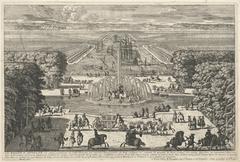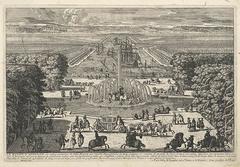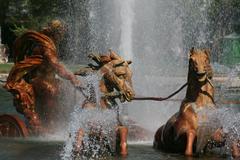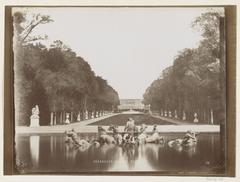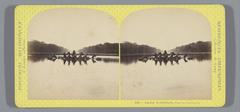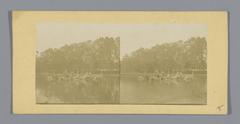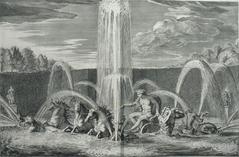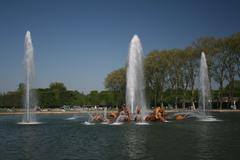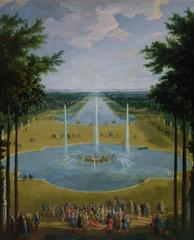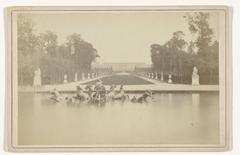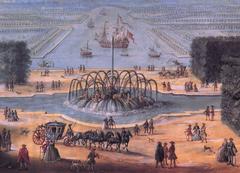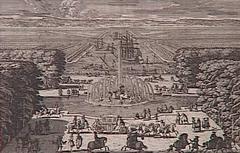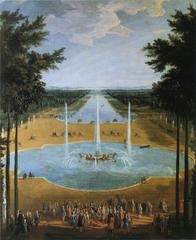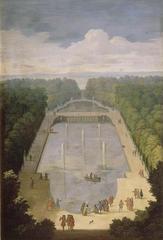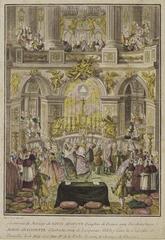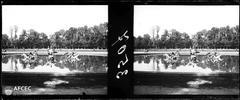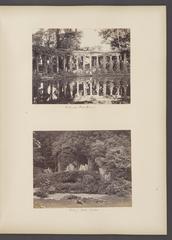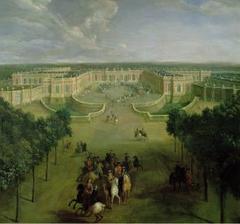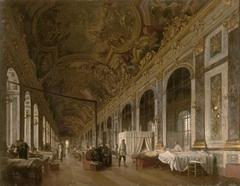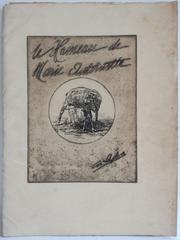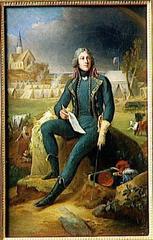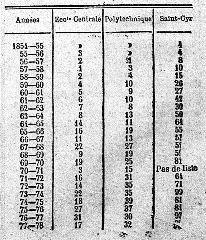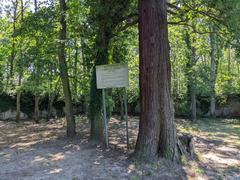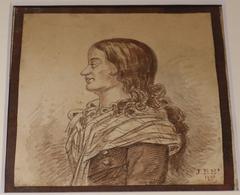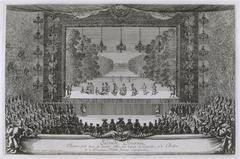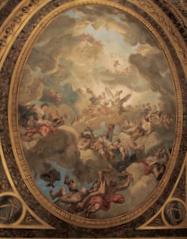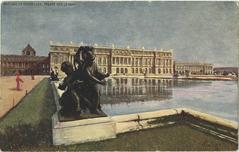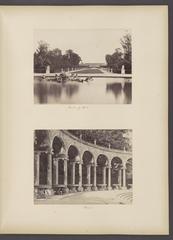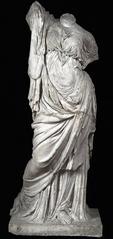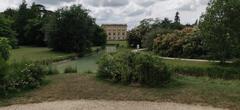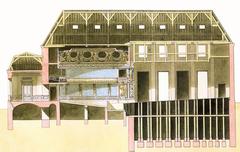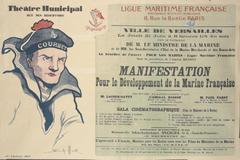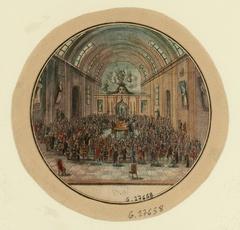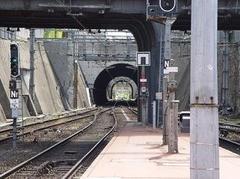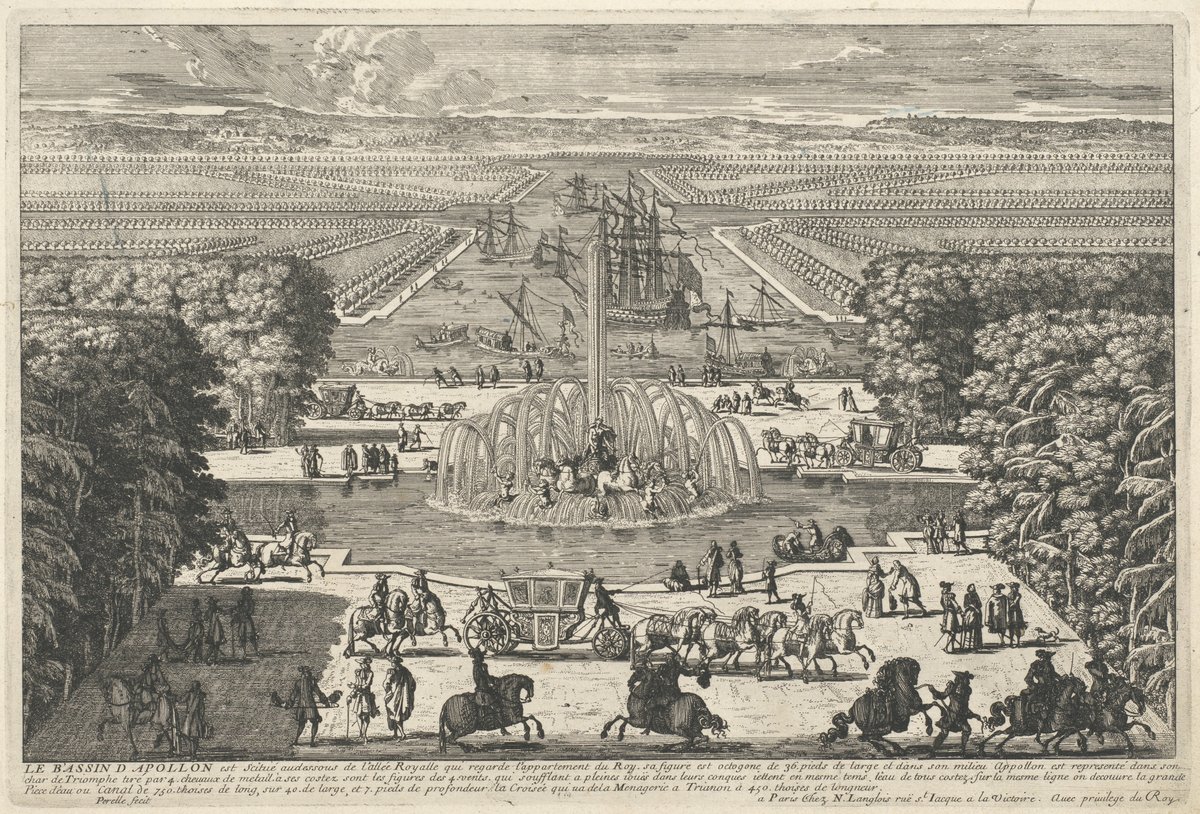
Apollo Fountain Visiting Hours, Tickets, and Historical Significance in Versailles, France
Date: 19/07/2024
Introduction
The Apollo Fountain, also known as the Bassin d’Apollon, stands as one of the most iconic and grandiose features within the Gardens of Versailles. This magnificent Baroque fountain, completed between 1668 and 1671, encapsulates the artistic vision and political symbolism of Louis XIV’s reign, famously known as the ‘Sun King’ (source). Designed by the renowned sculptor Jean-Baptiste Tuby under the guidance of Charles Le Brun, the Apollo Fountain depicts the Roman god of the sun, Apollo, rising from the water in his chariot, accompanied by a dynamic ensemble of mythical sea creatures (source). The choice of Apollo as the central figure was a deliberate representation of Louis XIV himself, projecting his image as a powerful and divine ruler whose authority and brilliance illuminated France (source). This comprehensive guide will delve into the rich history, intricate design, and enduring significance of the Apollo Fountain, offering valuable insights for visitors seeking to experience this masterpiece firsthand.
Table of Contents
- [History of the Apollo Fountain](#history-of-the-apollo-fountainhistory-of-the-apollo-fountain)
- [Early Stages and Initial Designs (1636-1668)](#early-stages-and-initial-designs-1636-1668early-stages-and-initial-designs-1636-1668)
- [Tuby’s Masterpiece - The Birth of the Apollo Fountain (1671)](#tubys-masterpiece---the-birth-of-the-apollo-fountain-1671tubys-masterpiece---the-birth-of-the-apollo-fountain-1671)
- [The Symbolism of the Sun King](#the-symbolism-of-the-sun-kingthe-symbolism-of-the-sun-king)
- [The Fountain’s Composition - A Study in Movement and Majesty](#the-fountains-composition---a-study-in-movement-and-majestythe-fountains-composition---a-study-in-movement-and-majesty)
- [Alterations and Restorations - Preserving a Legacy](#alterations-and-restorations---preserving-a-legacyalterations-and-restorations---preserving-a-legacy)
- [Visitor Information](#visitor-informationvisitor-information)
- [Visiting Hours](#visiting-hoursvisiting-hours)
- [Ticket Prices](#ticket-pricesticket-prices)
- [Accessibility](#accessibilityaccessibility)
- [Nearby Attractions and Events](#nearby-attractions-and-eventsnearby-attractions-and-events)
- [FAQs](#faqsfaqs)
- [Conclusion](#conclusionconclusion)
- [References](#referencesreferences)
History of the Apollo Fountain
The Apollo Fountain, also known as the Bassin d’Apollon, is one of the most iconic and grandiose fountains in the Gardens of Versailles. Its dramatic depiction of the Sun God, Apollo, rising from the water in his chariot, serves as a powerful symbol of the reign of King Louis XIV, the “Sun King.”
Early Stages and Initial Designs (1636-1668)
The fountain’s history begins in the early stages of the gardens’ development. Initially, under Louis XIII, a simple crossroads marked the location where the fountain stands today. This early fountain, built around 1636, featured representations of dolphins intertwined around a central rock formation.
When Louis XIV began his ambitious expansion of Versailles in the 1660s, the fountain underwent its first transformation. Between 1668 and 1670, Charles Le Brun, the king’s chief painter, proposed a new design for the fountain. This design depicted Apollo in his chariot, accompanied by tritons, sea monsters, and nymphs. While Le Brun’s vision was not fully realized, it laid the groundwork for the fountain’s future grandeur.
Tuby’s Masterpiece - The Birth of the Apollo Fountain (1671)
The fountain as we know it today is largely the work of Jean-Baptiste Tuby, a renowned Italian sculptor. Commissioned by Louis XIV, Tuby took over the project in 1668 and completed his masterpiece in 1671. Tuby’s design retained the central theme of Apollo but significantly enhanced its dynamism and symbolism.
The Symbolism of the Sun King
The choice of Apollo, the god of light, music, and poetry, was no accident. Louis XIV cultivated the image of himself as the “Sun King,” a ruler whose power and brilliance illuminated France. The fountain, strategically placed on the east-west axis of the gardens, served as a powerful reminder of this image. As the sun rose each morning, it appeared to emerge from behind the fountain, casting Apollo, and by extension Louis XIV, as the source of light and life for the nation.
The Fountain’s Composition - A Study in Movement and Majesty
The fountain’s composition is a masterpiece of Baroque sculpture. Apollo, depicted in a commanding pose, rises from the water in his chariot drawn by four powerful steeds. The horses, their manes and tails flowing, seem to leap from the water, creating a sense of dynamic movement. Surrounding Apollo are tritons, mythical sea creatures, who herald his arrival with conch shells. The entire scene is rendered in lead, a material that allowed for intricate detail and a sense of fluidity in the figures.
Alterations and Restorations - Preserving a Legacy
Over the centuries, the Apollo Fountain has undergone several restorations to preserve its splendor. In the 19th century, during the reign of Louis-Philippe, the fountain’s plumbing system was modernized. More recently, in the late 20th and early 21st centuries, extensive restoration work was undertaken to clean and repair the lead sculptures, ensuring that this iconic symbol of the Sun King’s reign continues to captivate visitors for generations to come.
Visitor Information
Visiting Hours
The Apollo Fountain is located in the Gardens of Versailles, which are open from 8:00 AM to 8:30 PM daily.
Ticket Prices
Entrance to the gardens is free on non-musical fountain days. On musical fountain days, tickets can be purchased at the entrance or online.
Accessibility
The Gardens of Versailles are wheelchair accessible, and electric vehicles are available for rent.
Nearby Attractions and Events
Special Events
The Musical Fountains Show and the Musical Gardens show are special events where the fountains are choreographed to classical music. These events typically occur from April to October on weekends and select Tuesdays.
Guided Tours
Guided tours of the Gardens of Versailles are available and often include a visit to the Apollo Fountain. These tours provide valuable historical context and fascinating insights into the design and symbolism of the fountain.
FAQs
Q: What are the best times to visit the Apollo Fountain?
A: The best times to visit are early morning or late afternoon to avoid the crowds and enjoy the fountain in the best light.
Q: Are guided tours available?
A: Yes, guided tours are available and can be booked through the official Versailles website.
Q: Can I take photographs at the Apollo Fountain?
A: Yes, photography is allowed. The fountain is a popular spot for both amateur and professional photographers.
Q: Is the Apollo Fountain accessible for visitors with disabilities?
A: The gardens have some areas that are wheelchair accessible, but the terrain can be uneven. It is recommended to check accessibility information on the Palace of Versailles website before your visit.
Conclusion
The Apollo Fountain at Versailles is more than just an artistic marvel; it is a profound symbol of the grandeur and ambition of Louis XIV’s reign. From its early designs in the mid-17th century to the masterful execution by Jean-Baptiste Tuby, the fountain encapsulates the essence of Baroque artistry and sophisticated hydraulic engineering (source). Its strategic placement in the Gardens of Versailles not only enhances the visual splendor of the landscape but also reinforces the political and cultural narrative of the ‘Sun King’ as a central figure of power and light (source). Over the centuries, the Apollo Fountain has undergone various restorations, preserving its legacy for future generations to admire and appreciate (source). For visitors, it offers a unique glimpse into the historical and artistic achievements of 17th-century France, making it an essential stop in the exploration of Versailles’ opulent gardens. Whether you are an art enthusiast, a history buff, or simply seeking an unforgettable travel experience, the Apollo Fountain promises to captivate and inspire. For more information and updates, download the Audiala mobile app and explore related articles and resources.
